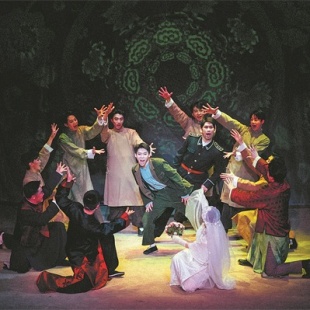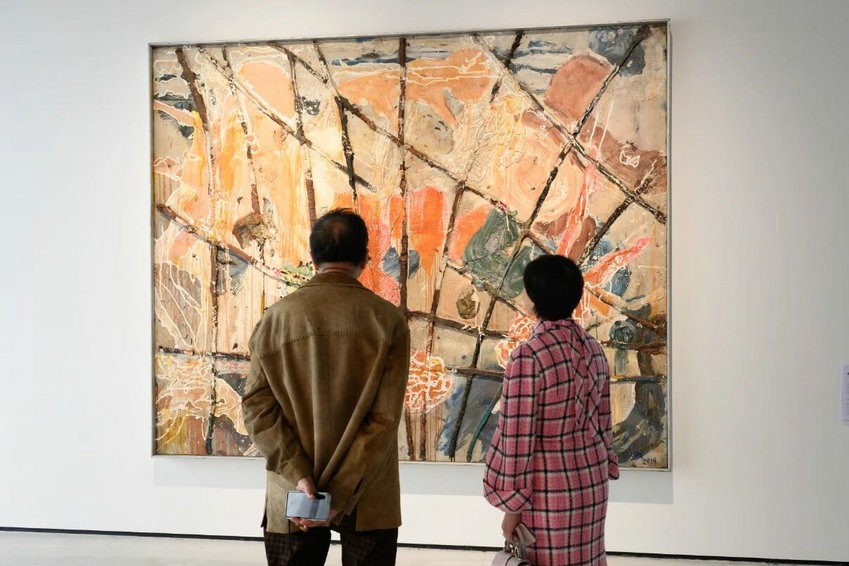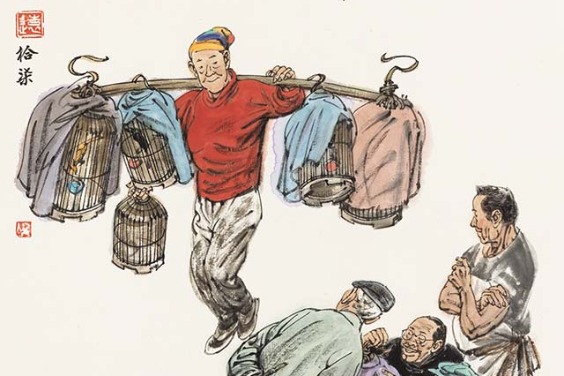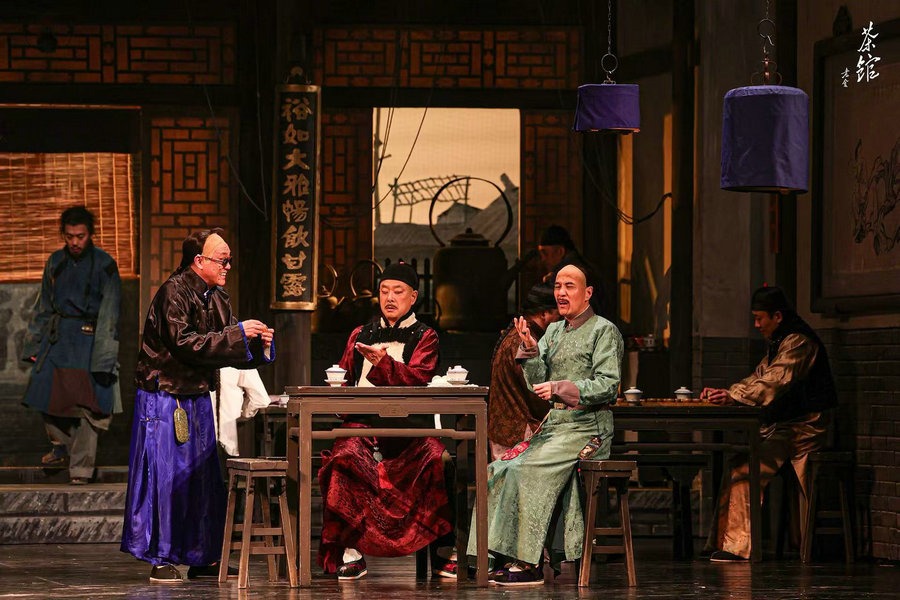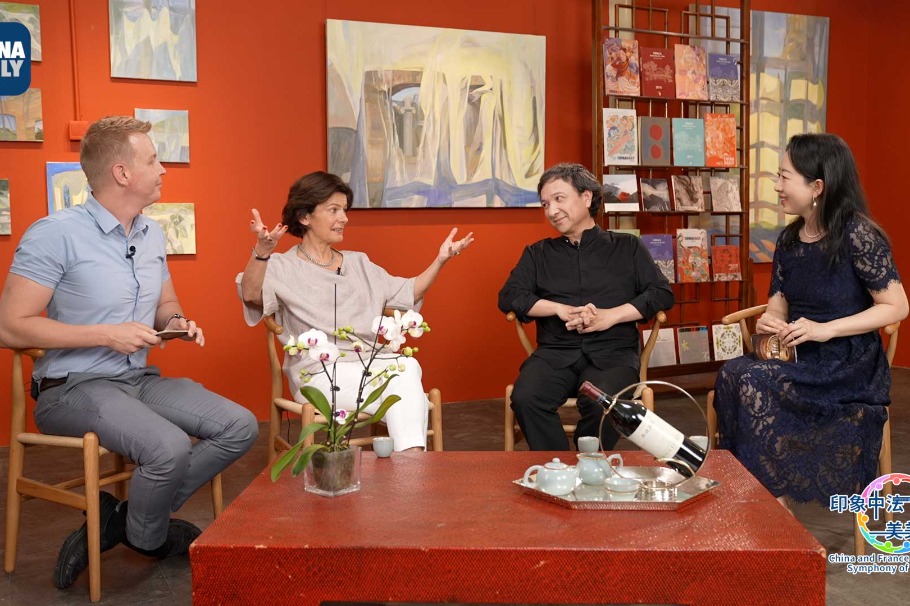Making a play on the past

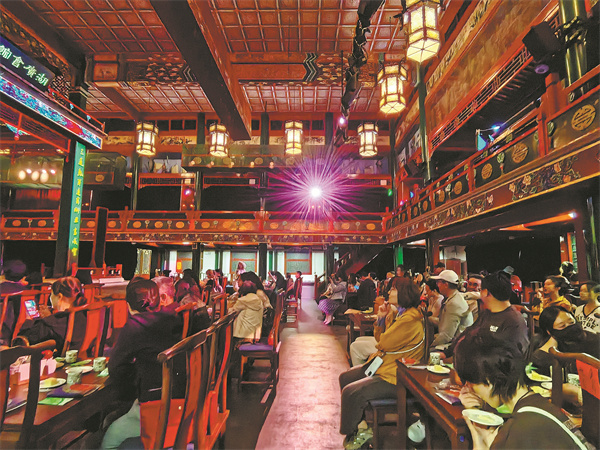
"The moment they step through the gate, they will feel that they have arrived in an ancient theater of traditional opera and be drawn into the story."
The ticket design is inspired by a ticket for a performance by Peking Opera master Mei Lanfang, which is now preserved in the museum. The cast is printed in the style of traditional Chinese calligraphy, and the seat numbers are handwritten by staff.
An accompanying handout mimics the front page of a newspaper from a century ago, with an advertisement introducing highlights of the troupe, and a space where theatergoers can paste a photo of their own.
"Unlike a conventional plot synopsis, our newspaper handout contains hidden clues. The design not only ties into the story, as we have a newspaper vendor character, but also brings the audience into the narrative," she says.
Before and after each performance, audience members can also check out stalls where they can collect stamps, take instant photos, and purchase merchandise.
The team designed a set of creative experiences inspired by the story. One of its most famous scenes has been turned into a special stamp set. By layering several stamps in different colors on the same sheet of paper, a complex and colorful image is gradually brought to life.
Special events are held during festivals and solar terms (a traditional Chinese system of seasonal markers to divide a year into 24 segments according to the motion of the sun), including intangible cultural heritage experiential activities from April 30 to May 4, during which theatergoers were able to try their hands at calligraphy, makeup, and the making of ronghua (velvet flowers).
"We aim to present more than just a production, but rather a multidimensional project that incorporates history, the museum, education, creative products and tourism," Wang adds.
"There are already people coming from other provinces, and in the future, we hope that the guild hall will become a destination for more travelers seeking in-depth cultural experiences, to see this site-specific production, and to learn about historical architecture, traditional opera and Beijing's cultural heritage."


